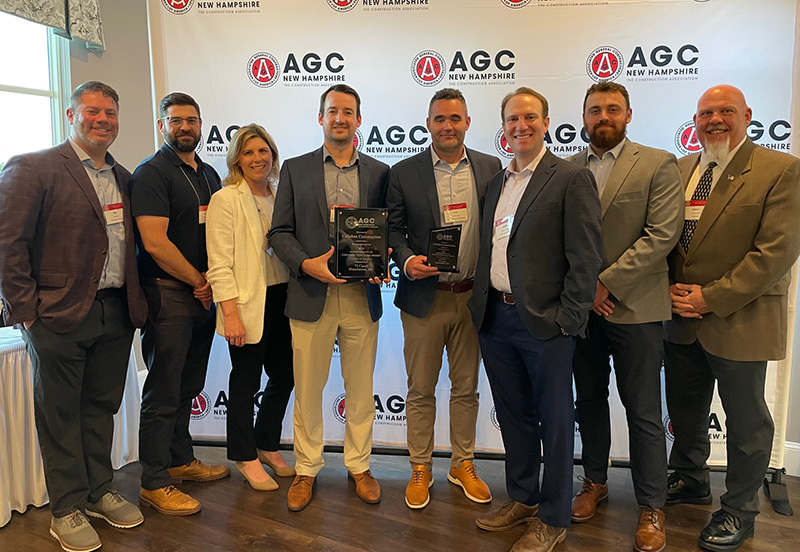News: Construction Design & Engineering
Posted: September 15, 2010
Economic incentives - tools for preserving and renovating commercial real estate
Massachusetts real estate has fared better than most other parts of the country since the Great Economic Upending of 2007-2008. You can see the evidence as downtown lobbies are redesigned and remodeled (white marble is in vogue), as buildings are retrofitted with energy saving improvements and our old mill buildings continue to be reclaimed and recycled in many communities.
First, investment capital is attracted to the unique confluence in the Boston area resulting from the concentration of exceptional colleges and universities and the many high tech/bio tech businesses and related support industries they have spawned. Once here, these investors seek to add value to their buildings with improvements to position them for a recovered market down the line.
Second, higher energy costs and the emphasis on energy conservation have spurred capital spending by investors to achieve greener buildings with lower energy costs and to differentiate their properties through LEED (Leadership in Energy and Environmental Design) or other "green" certifications.
Energy conservation tax incentives for business are helping to drive this trend which can be as simple as replacement of 30 year old windows with new energy efficient ones in high rise class A buildings. Recently, the Federal Energy Improvement and Extension Act of 2008 extended as a current deduction (versus capitalization at 39 years for commercial and 27.5 years for rental residential property) a range of between $.30 and $1.80 per s/f of energy conservation improvements certified under qualified calculations performed in accordance with IRS guidance.
Third, the historical nature of our civic and industrial buildings has engendered interest in preservation for a long time. Hundreds of 19th century mill type industrial buildings have served as "rebuilding blocks" especially beginning in the 1980s with the advent of the federal Historic Tax Credits Program.
Before the time of economic incentives to preserve and restore buildings there were many advocates for preservation but fewer takers. Urban renewal was in vogue with demolition and new construction. Planners observed the effects of urban renewal of the 1950s and 1960s and concluded there were better ways to build and preserve communities. They developed public policy initiatives to encourage preservation activity by private capital through historic tax credits. Our great former industrial cities, including Boston and Lowell, reflect the results of over 30 years of preservation of historic buildings and neighborhoods. Shuttered manufacturing buildings and the commercial blocks evolved to affordable and market apartments, artists' lofts, condominiums and R&D and office complexes. People are drawn to the new housed in the old and regional character preserved.
The economic incentive tools have evolved over the past 30 years and here are some current highlights and where to look to learn more about them:
* Federal Historic Tax Credits- 26 U.S.C. 47; 26 C.F.R. 1.48. A tax credit for qualified historic restoration expenditures equal to up to 20% of such qualified costs for buildings to be placed in service as commercial properties which were constructed prior to 1936 and located within a recognized historic district and which are deemed significant by Massachusetts Historic Commission (MHC) or properties listed on the National Register of Historic Places.
* Massachusetts Historic Rehabilitation Tax Credits M.G.L. c. 62 §6J; C. 63 § 38R; 830 CMR, 63.38 R. Tax credits against Massachusetts income equal to up to 20% of certified rehabilitation expenditures is available for properties similarly qualified on the federal level whose owners have received an award of Massachusetts historic rehabilitation tax credits.
* Efficient Commercial Buildings Tax Deduction - 26 U.S.C. § 179 D; IRS Notice 2008-40 - up to $1.80 per s/f.
Each owner/developer and project is different and the proper evaluation and use of these tools requires an owner to have the support and guidance of a variety of consultants and professionals from energy advisors and historic preservation consultants to lawyers and accountants experienced in the field. The benefits are there for those who are knowledgeable and best positioned to take advantage of them.
Frank Capezzera, Esquire, is a partner with Murtha Cullina LLP, Boston.
MORE FROM Construction Design & Engineering
Nobis Group awards Robinson and Moreira STEM scholarships
Concord, NH Nobis Group, a 100% employee-owned consulting firm specializing in engineering and environmental solutions across the Northeast, has named the recipients of its 2025 STEM Scholarship: Andie Moreira of

Quick Hits
Columns and Thought Leadership

Ask the Electrician: Is summer a prime time for commercial electrical maintenance?
The answer is “Yes!” While January marks the official new year, many businesses view September as a fresh start. This makes summer an ideal time for commercial property owners to schedule long-term electrical maintenance projects.

The rise of incubators and co-working spaces: The latest in life sciences - by Matt Combs
In recent years, the life science industry has witnessed a shift in how companies operate and innovate. One of the key driving forces behind this transformation is the emergence of incubators and co-working spaces specifically tailored to meet the unique budget and schedule needs of startups.

Careers in Construction Month focus on training and safety - by Joe Camilo
October is Careers in Construction Month, and rarely has it been more consequential. According to our chapter’s national parent organization, the construction industry needs to attract half-a-million new workers in the coming year to meet demand. Addressing that need is a huge job, but we at ABC MA are trying to do our part.

The design-build advantage: Integrated interior design solutions - by Parker Snyder
When it comes to corporate interior spaces for both commercial and industrial projects, partnering with a design-build firm with in-house interior design services can offer clients many benefits. Unlike traditional delivery methods where interior designers operate independently from the design and construction teams, often creating a longer project timeline as cost negotiations and revisions ensue







